The offspring of a horse and donkey parents!
Advertisement
Mule Scientific Classification
- Kingdom
- Animalia
- Phylum
- Chordata
- Class
- Mammalia
- Order
- Perissodactyla
- Family
- Equidae
- Genus
- Equus
- Scientific Name
- Equus mulus
Read our Complete Guide to Classification of Animals.
Mule Conservation Status
Mule Facts
“A stupid mule is still smarter than a good horse or a bad man.”
What is a mule? Mules are a genetic hybrid that has been the workhorse of human civilization for millennia. Stronger than a horse, but gentler than a donkey, the mule combines all the best elements of both breeds into a package that is a staple of agricultural pursuits across the globe.
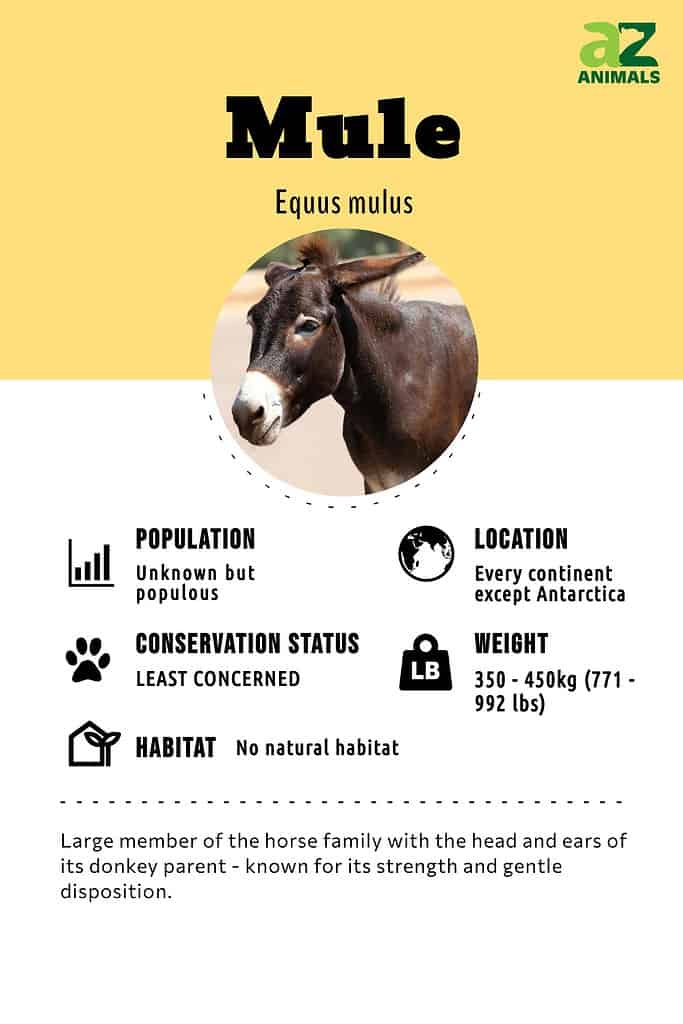
Incredible Mule Facts!
- What is a mule? A mule is the offspring of a male donkey and a female horse.
- Mules are animals that were intentionally created during ancient times in order to highlight the best traits of the stallion and the donkey.
- Because mules have 63 chromosomes — a mixture of 64 from the horse and 62 from the donkey – most are infertile.
- One of the earliest recorded instances of mules is in Ancient Egypt circa 3000 BCE.
- They compete in all of the same equestrian events, including dressage, like horses.
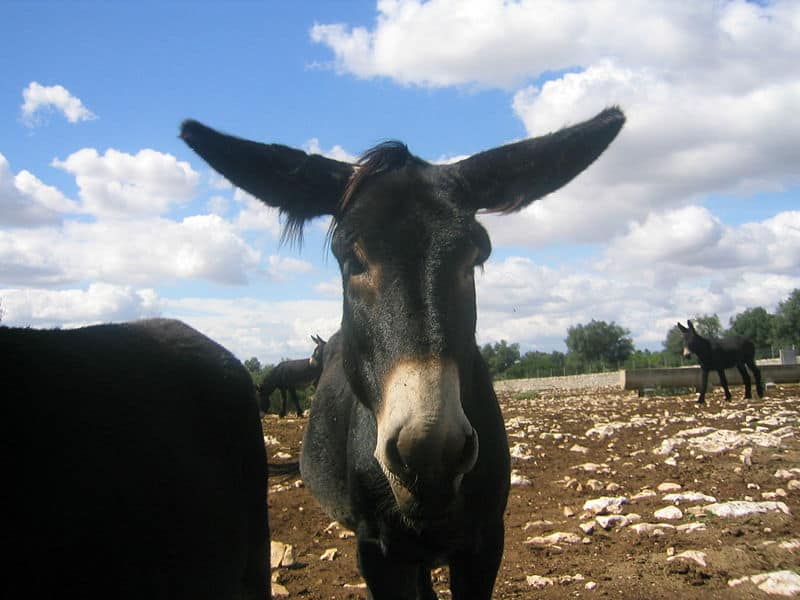
Mules are a hybrid of a male donkey and a female horse.
©Einar Faanes / CC BY-SA 3.0 – License
Scientific Name
These animals are members of the family Equidae of the genus Equus. Their scientific name is Equus mulus, and that stands true for both the male and female of the species despite their different names. The mule is a hybrid of a male donkey, called a jack, and a female horse, called a mare. Equus is the Latin word for horse, and mulus is Latin for a mule.
Evolution
Mules have a long and storied history and have played important roles in civilizations all over the world. Horses originated in Central Asia around 3500 BC and extended their range across the world – eventually extending into the range of the donkey – which originated in Africa. It is known that mules were bred in Mesopotamia before 1,000 BC. There is evidence in art and ancient writings that mules were present at many important events – they are illustrated in a painting in the Tomb of Nebamun at Thebes, dating from around 1350 BC. Mules were present in Israel in the time of King David and were mentioned by Homer in the Iliad in 800 BC. George Washington bred mules at Mount Vernon. Mules pulled wagon trains across the American plains and could travel 30 miles a day to a horse’s five. The mule is famous the world over for its great strength and gentle manner.
Appearance and Behavior
Mules are animals that look exactly like what they truly are, the resulting genetic hybrid of a stallion and a donkey. While generally brown or gray, they can come in any coat and color found on both horses and donkeys. They are larger and leaner than jacks and smaller but stouter than colts. Their heads are shorter, thicker, and more closely resemble that of a donkey while their ears are longer than a horse’s but shorter than a donkey’s.
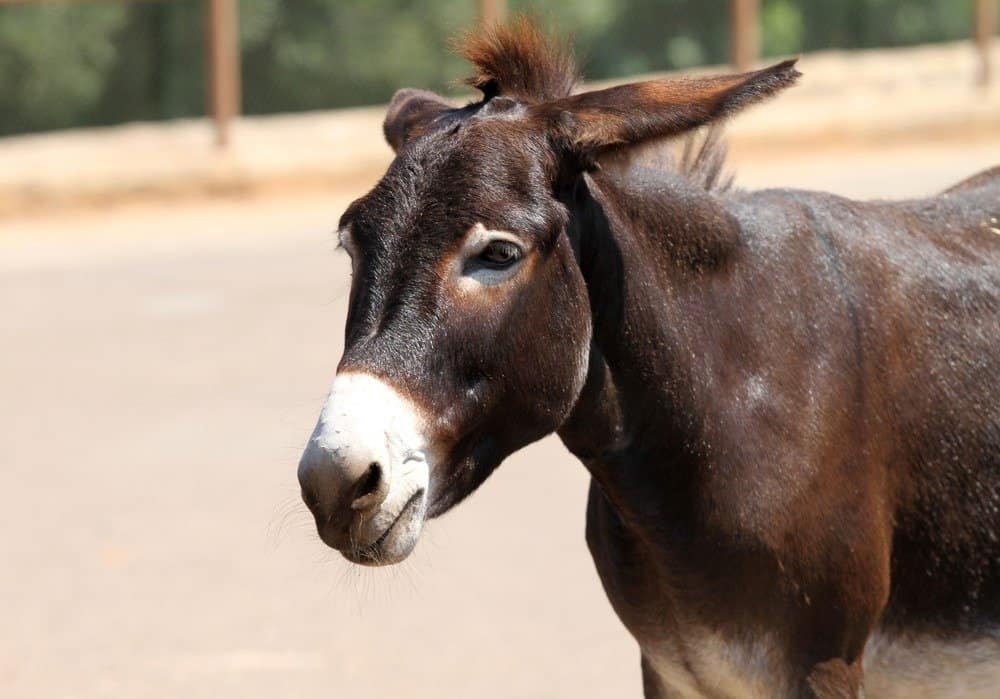
Mules have a gentle temperament and strong builds that are perfect for working in agriculture.
©BlackDorianstock/Shutterstock.com
The average size of these animals is between 50 and 70 inches in height, and their weight can range between 600 and 1,500 pounds. Miniature animals weighing only 50 pounds have been bred, and the largest recorded male weighed in at a massive 2,200 pounds. That weight ranges from an average-sized male bulldog up to the weight of two grizzly bears put together. Apollo, the largest and heaviest mule, also stood an impressive 19.1 hands high, about 77 inches!
These animals’ temperament was the ideal that breeders were trying to reach when combining the qualities of colts and jacks. In them, you have the strength and hardiness of a donkey mixed with the combined temperaments of both parents. Stallions have a tendency to be flighty, or easily spooked, and jacks are known as stubborn and difficult to manage. The mule is a stolid, patient, and generally even-tempered beast.
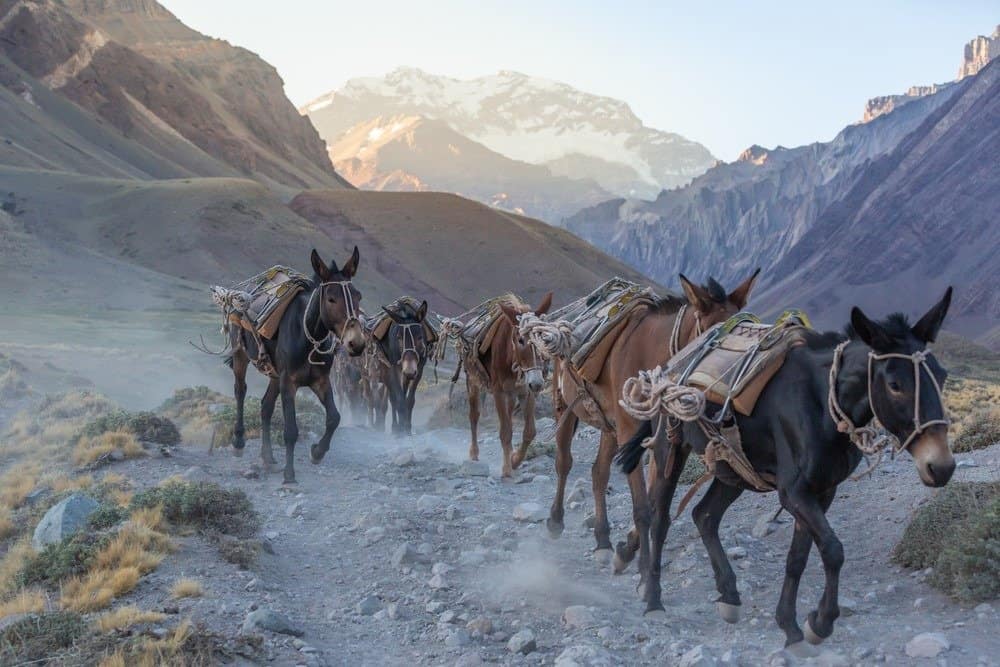
Mules can be found all over the world and can handle almost all climates.
©Ezequiel Laprida/Shutterstock.com
Habitat
Mules are found throughout the world. They are located on every continent but Antarctica and their breeding has left them well-suited to handle almost all climates. With their tougher skin, when compared to a stallion, they are less likely to overheat, and they need less food than a horse making foraging easier.
Mules are a human-created species and, as such, they have no natural habitat. They can be found anywhere that humans have brought them.
Diet
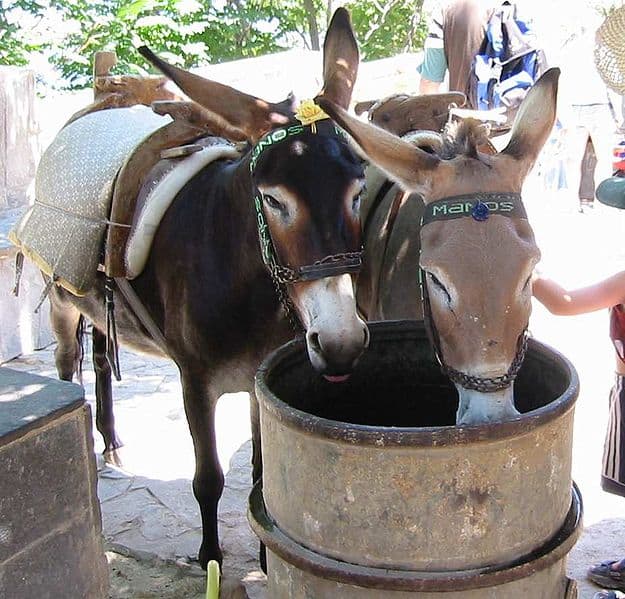
Mules eat a variety of grasses and small shrubs and require less food than a stallion.
©Elgaard / CC BY-SA 3.0, via Wikimedia Commons – License
With respect to its diet, the mule is no different than its parents. They eat a wide variety of grasses and small shrubs. If they do not have a large enough area to forage successfully, generally one to two acres, then their diet may be supplemented by hay, grain, or pelletized food.
Another result of the hybridization of the species is that, although they have retained the size of the colt, they only require a fraction of the amount of food necessary to feed a stallion. When not working, they spend the majority of their day eating or resting.
Predators and Threats
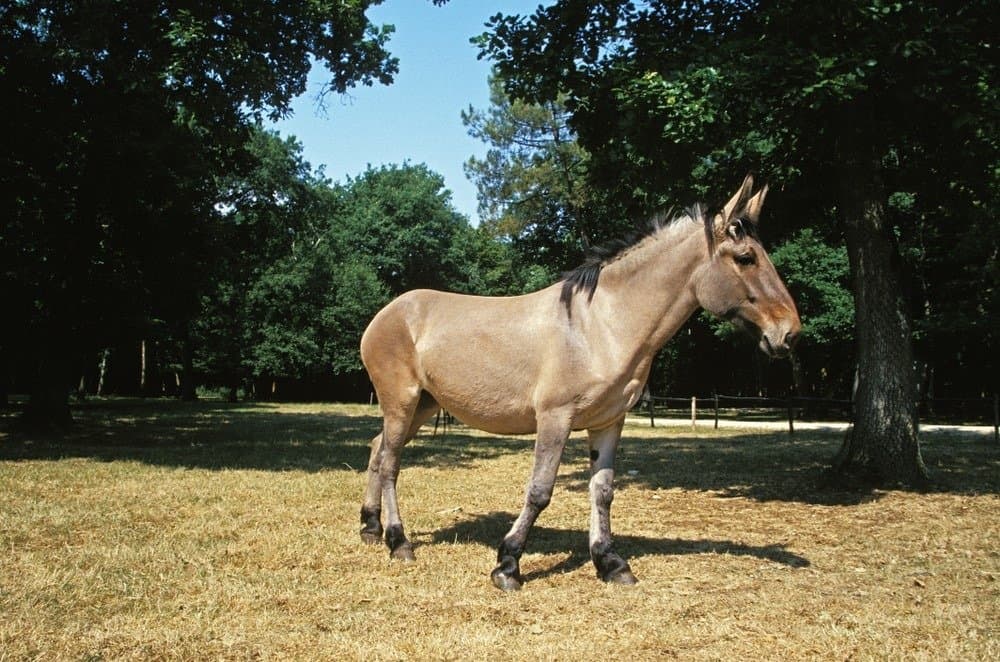
Mules have no predators but need frequent veterinary checkups and vaccinations.
©slowmotiongli/Shutterstock.com
The principal threat mules face is a disease. Stallions, donkeys, and mules all face similar diseases such as tetanus, Eastern equine encephalomyelitis, and equine influenza. Appropriate care for the mule, frequent veterinary checkups, and vaccination programs all help to prevent the contraction of these illnesses, or at least to mitigate the effects. Being that they are wholly domestic animals, they do not typically face a threat from any predator.
Reproduction, Babies, and Lifespan
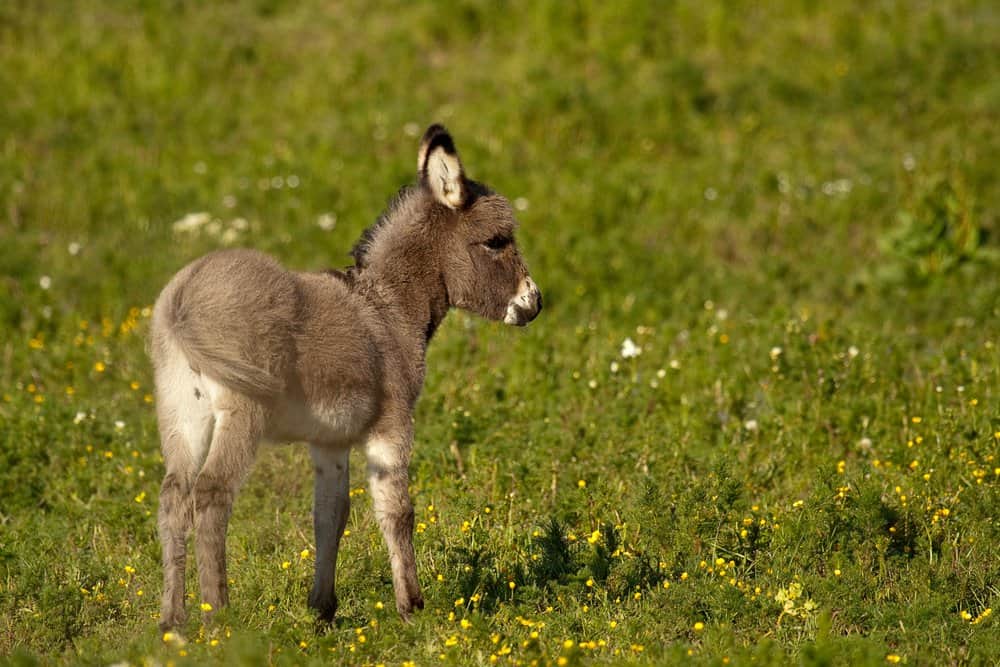
Mules can live well into their 40s.
©MichaelHansen/Shutterstock.com
As mentioned above, mules are bred by cross-breeding a mare with a jack. The mare gives birth to a baby, called a foal, after a gestational period of 11 to 12 months. The average mule lives approximately 30 years, but there have been mules that have lived well into their 40s. Because mules have the odd number of chromosomes, 63, in fact, they are often infertile. However, there have been instances of female mules giving birth.
Population
These animals exist on six of the seven continents with Antarctica being the exception. They live almost exclusively in human care as, due to the above-discussed fertility issues, they are largely unable to breed in the wild to sustain a feral herd. Reliable population numbers are nearly impossible to come by; however, the U.S. Department of Agriculture reported approximately 200,000 mules residing within the United States alone as of 1998. The mule is categorized as a species of the least concern.
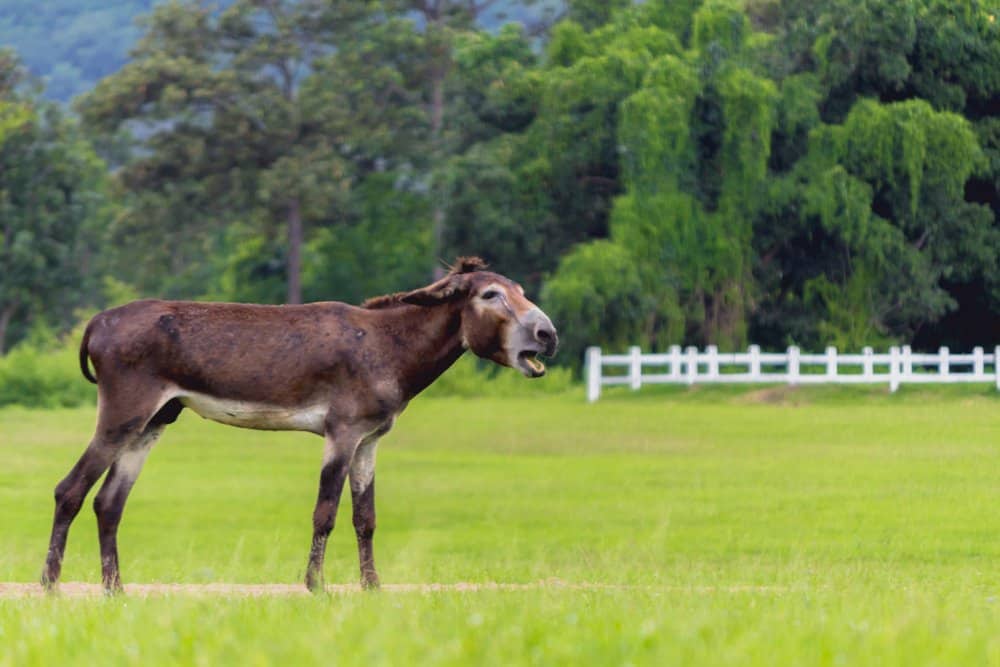
Mules live on every continent except Antarctica and enjoy a conservation status of the least concern.
©Korawat photo shoot/Shutterstock.com
In the Zoo
These animals are common sights in zoos all across the United States. They are frequently found in petting zoos as well because of their even temperament. The San Diego Zoo has several mules, and they recently donated several to CalFire for use as pack animals in remote wilderness areas of the state to assist in combating wildfires.
View all 164 animals that start with MMule FAQs (Frequently Asked Questions)
Are mules carnivores, herbivores, or omnivores?
The mule is an herbivore. They primarily eat grass and small shrubs; however, they are also fed grain or other forms of pelletized food in farming or domestic environments.
Why mules are sterile?
Mules are almost always sterile due to the fact that they have 63 chromosomes. There have, however, been instances in which female mules have successfully given birth.
Can a mule have a mule?
Mules are largely incapable of bearing offspring.
Are mules dangerous?
Mules are less dangerous than their parents. The donkey stubbornness and the skittishness of the colt combine to form an extremely even-tempered animal. A key trait of the mule is that in confined spaces they will not thrash about and injure themselves as a horse tends to. While they are very strong, mules are difficult to provoke, and they are born already domesticated and used to human interaction.
What are mules used for?
Mules are used for a variety of purposes. Throughout history, they have most commonly been used for draft and pack animals; however, they have also been used as mounts, and they even compete in all the same types of equestrian events as horses. The smallest mules were used as draft animals within mines.
What is the difference between a mule and a horse?
There are a number of differences between a mule and a horse:
Mules are more docile, even-tempered, and more intelligent than stallions. They are slightly smaller but stronger than stallions. A mule also consumes significantly less food than a horse of the same size. Their skin is thicker and better able to withstand temperature extremes and friction as well.
What Kingdom do Mules belong to?
Mules belong to the Kingdom Animalia.
What phylum do Mules belong to?
Mules belong to the phylum Chordata.
What class do Mules belong to?
Mules belong to the class Mammalia.
What family do Mules belong to?
Mules belong to the family Equidae.
What order do Mules belong to?
Mules belong to the order Perissodactyla.
What genus do Mules belong to?
Mules belong to the genus Equus.
What type of covering do Mules have?
Mules are covered in Fur.
What is the main prey for Mules?
Mules eat grass, weeds, and vegetables.
What are some predators of Mules?
Predators of Mules include foxes, wolves, and lions.
How many babies do Mules have?
The average number of babies a Mule has is 1.
What is an interesting fact about Mules?
Mules are the offspring of a horse and a donkey!
What is the scientific name for the Mule?
The scientific name for the Mule is Equus mulus.
What is the lifespan of a Mule?
Mules can live for 15 to 20 years.
How fast is a Mule?
A Mule can travel at speeds of up to 15 miles per hour.
What is the difference between a mule and a donkey?
An important difference between a mule and a donkey is that a donkey can reproduce while a mule can’t.
What is the difference between a mule and a hinny?
A hinny is born from a male horse and a female donkey, while a mule is born from a female horse and a male donkey.
What are the differences between a mule and a burro?
The main differences between burros and mules are that burros are just domesticated donkeys, are smaller than mules, and are used primarily in underdeveloped countries. Mules are a hybrid of a burro and a horse, are usually larger, and are used as pack animals.
Thank you for reading! Have some feedback for us? Contact the AZ Animals editorial team.
Sources
- David Burnie, Dorling Kindersley (2011) Animal, The Definitive Visual Guide To The World's Wildlife
- Tom Jackson, Lorenz Books (2007) The World Encyclopedia Of Animals
- David Burnie, Kingfisher (2011) The Kingfisher Animal Encyclopedia
- Richard Mackay, University of California Press (2009) The Atlas Of Endangered Species
- David Burnie, Dorling Kindersley (2008) Illustrated Encyclopedia Of Animals
- Dorling Kindersley (2006) Dorling Kindersley Encyclopedia Of Animals
- David W. Macdonald, Oxford University Press (2010) The Encyclopedia Of Mammals
- Britannica, Available here: http://www.britannica.com/animal/mule-mammal
- American Mule Museum, Available here: https://www.mulemuseum.org/history-of-the-mule.html
- Farm Show Magazine (1990) Vol. 14 Iss. 4 Pg. 20, Available here: http://www.farmshow.com/a_article.php?aid=8428
- American Mule Association, Available here: http://americanmuleassociation.org/diseases-that-affect-mules-and-donkeys

















